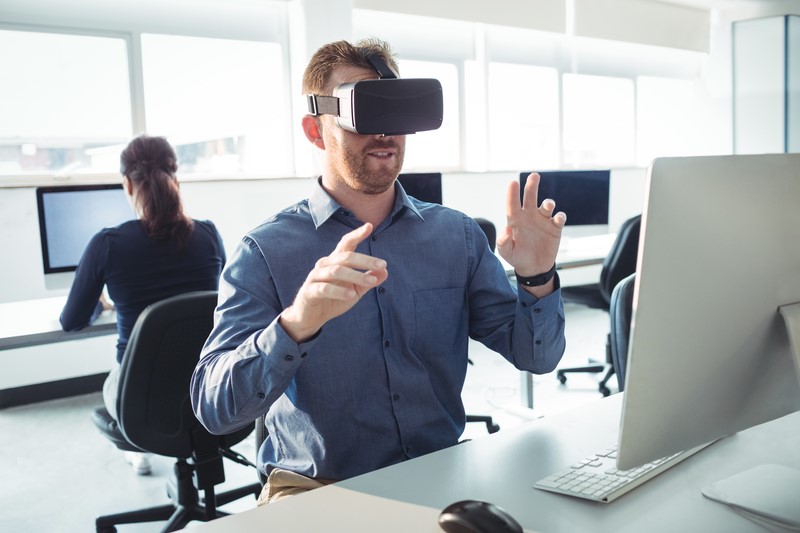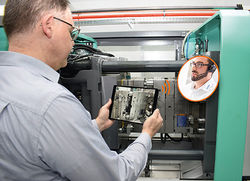n the current context, virtual reality can help to overcome many inconveniences that quarantine and the coronavirus have brought us.
The Covid-19 pandemic that has confined a third of the planet to their homes has increased interest in this technology to create interactive meetings.
New technologies such as Virtual Reality are postulated as the best solution to continue teaching in the coronavirus pandemic.
Homebound, the only runway for social relationships is in the imagination. Millions of citizens around the world have turned to the Internet to stay connected to their personal relationships. Video conferences are being used more and more these days because of a virus called Covid-19 or coronavirus.
And the immersive experiences produced by virtual reality technology serve to send the brain elsewhere. Abandoned to their fate in a drawer after the “wow” effect has worn off, many owners of these viewers have found a new outlet. Changes in social behaviour – what will they lead to?
Years ago there was a tremendous run on virtual reality. It’s the future, came the words of experts in the field. This is going to change everything, sold others. There was no such revolution, and although there have been masterful experiences in this time, the adoption of this technology in the domestic world has been slow. Hopefully slow, but not outstanding.
During this unprecedented challenge, virtual reality (VR) offers a strong alternative to video calling and those who adopt it may choose to maintain virtual communication as a long-term strategy.
The arrival of “Half Life: Alyx”, a new installment in the cult video game saga, has shown the way forward for the VR industry. An industry that already has in its hand, for the moment, its flagship title. Available for the main virtual reality devices for computers (Valve Index, Oculus, HTC Vive…), the experience has even served for education. To teach mathematical formulas by the ability to interact with the (virtual) furniture available in the game.
This experience, full of first-person action and puzzles, establishes a turning point in the industry, demonstrating its ability to take advantage of the language and narrative of virtual reality.
More than just entertainment
But, apart from the entertainment experiences that are appearing, there are those who are using the viewers to make virtual stays – such as the possibilities offered by Facebook Horizon, planned for this year – and for video calls during working hours. To be there, even if it is not physically.
To make it look like it is, but still keep it in shape. Virtual reality offers multiple solutions to keep the company active while minimizing health risks for employees. This technology allows the creation of interactive and collaborative teleworking environments.
VR allows the creation of avatars of each of the attendees and they are transformed into shorter, less confusing and much more decisive meetings than video conferences, allowing everyone to interact on the same 3D content and avoiding 100% the risk of contagion.
In view of this alarming situation that has led to the cancellation of numerous mass events, interest in virtual reality has grown. And there are different tools to maintain the activities.
“The applications of virtual reality are constantly evolving, and are no longer thought of only for entertainment environments, but in the sector of events, meetings and fairs there is a great opportunity to explore.
And also in tele-education, although in this field there are still few experiences. The lack of material and the social gap that exists in most of the countries in terms of education does not provide enough to establish virtual classes. But it is something that is on the table. Because different proposals have begun to emerge for this purpose.
In the field of health, Virtual Reality has a lot to say
In the health field, many specialists see the opportunity to increase the level of interaction with the patient without having to maintain physical contact.
The intention is to supplement theoretical material with real-life situations. The level of acceptance is very high among patients who have tried different solutions with Virtual Reality.
On the other hand, phobias are psychological disorders or irrational fears that manifest themselves in people. The aim of VR is to progressively expose people to their fears in a controlled environment.
Augmented Reality (AR) links the physical world with the digital world, where digitally generated images are mixed with the contours of reality.
On the other hand, we have seen how when it comes to implementing learning and training methods aimed at professionals in the health sector, solutions with Virtual Reality have led to advances in the sense of being able to extend education and training to a greater number of students, cost savings in outdated laboratory equipment, and improvements in adapting the curriculum to all types of students and teaching methods.
Fashion is one of the industries that has benefited most from this technology. One of the first applications that people think of with AR, and which often interests consumers, is the ‘virtual fitting room’. Whether at home or in a store, the idea is to be able to select a garment virtually and, by looking in a mirror, see how it looks without having to physically try it on. Besides being a completely new and attractive experience for the consumer, it is a tool that would undoubtedly be very useful in providing a more efficient purchasing process
Virtual reality for teleworking: The ultimate solution
The viewers that stood out with the video games are now used to overcome phobias, health problems and learn languages.
For example, although employees work more efficiently at home, they are less likely to be promoted as quickly as their counterparts in the workplace. This could perhaps be attributed to the lack of physical interaction they have with their colleagues. Entering an office may well lead to the creation of stronger relationships.
Feelings of isolation are a real possibility for totally remote workers as well.
Although remote workers have been shown to foster friendly virtual working environments, they may still lack a sense of real belonging or being an integral part of the company and its culture.
Virtual reality could possibly address all of these challenges. Workers could be immersed in a simulated workspace where they would have the opportunity to interact with their co-workers in a meaningful, yet virtual, way. Meanwhile, advances in telerobotics could allow “teleportation” to work.
As the cost to consumers of switching to VR decreases, the development of new and exciting applications of the emerging technology increases.
More than one million people used Samsung’s VR headphones last year, and that’s just the beginning. Google’s cardboard VR has greatly reduced the cost of virtual reality.
Unfortunately, telerobotics is still very expensive. However, there are cheaper solutions. Social networking giant Facebook is investing a great deal of time and money in virtual reality and plans to offer affordable hardware for its social VR application.
In their application, users create avatars that interact with each other in real time, either in virtual or real-life environments. Facebook’s social VR application, or technology very similar to it, could be used to create virtual workspaces.
To sum up, VR and video visit calls in healthcare will be a major advance and a possibility to continue to care for patients during quarantine.
In addition to decongesting the health system, which is saturated in half the world, it will lead to an advance in medical services towards the systems and methodologies of the future, which is now closer and more present than ever.
Start today and create your world
Quelle:
https://www.simlabit.com/how-to-use-vr-and-video-visit-calls-in-healthcare/




